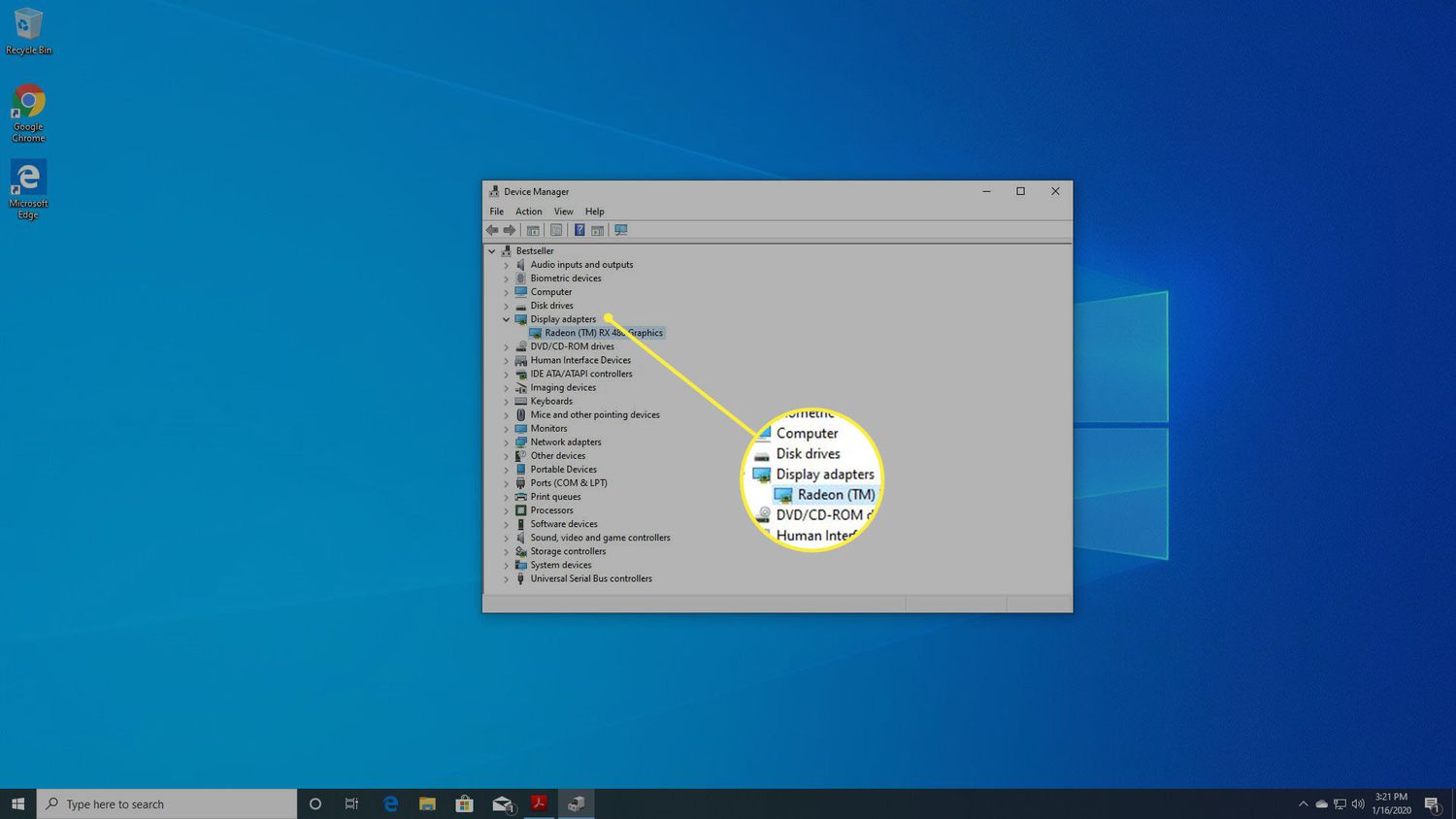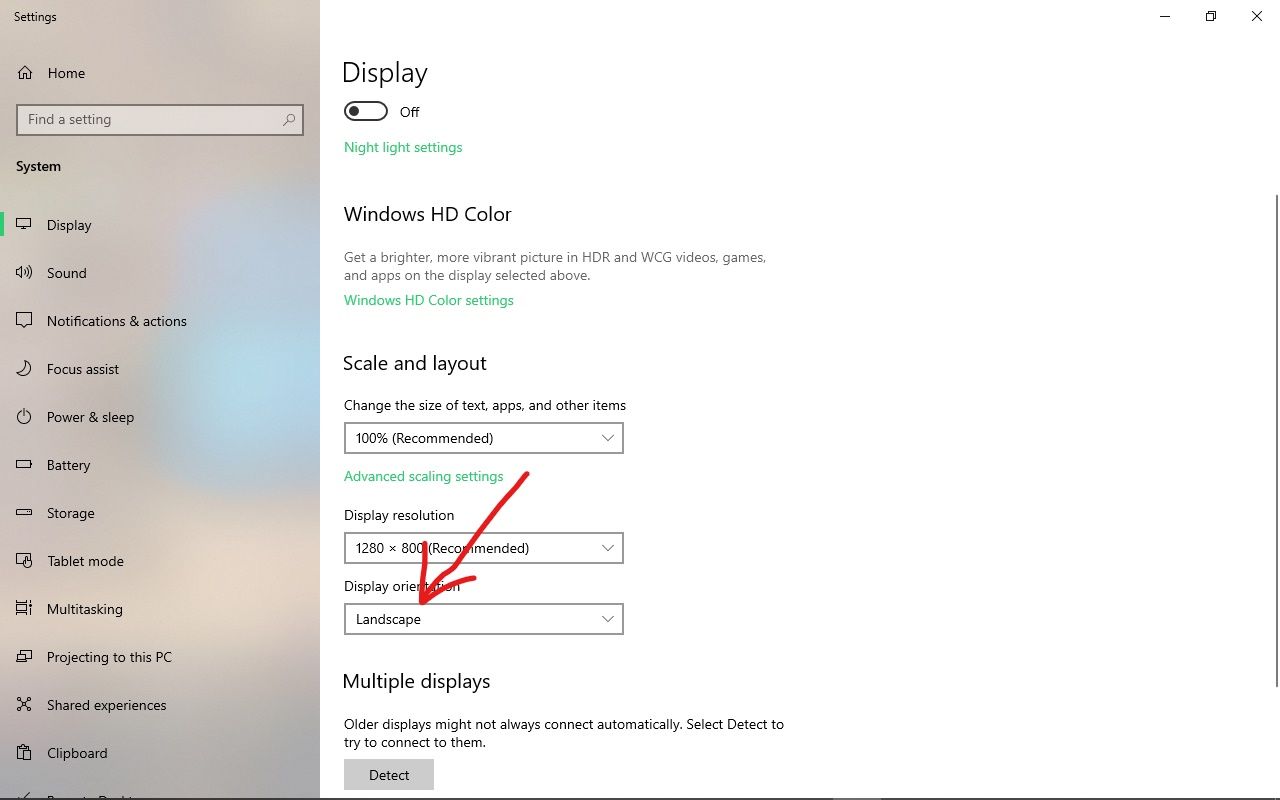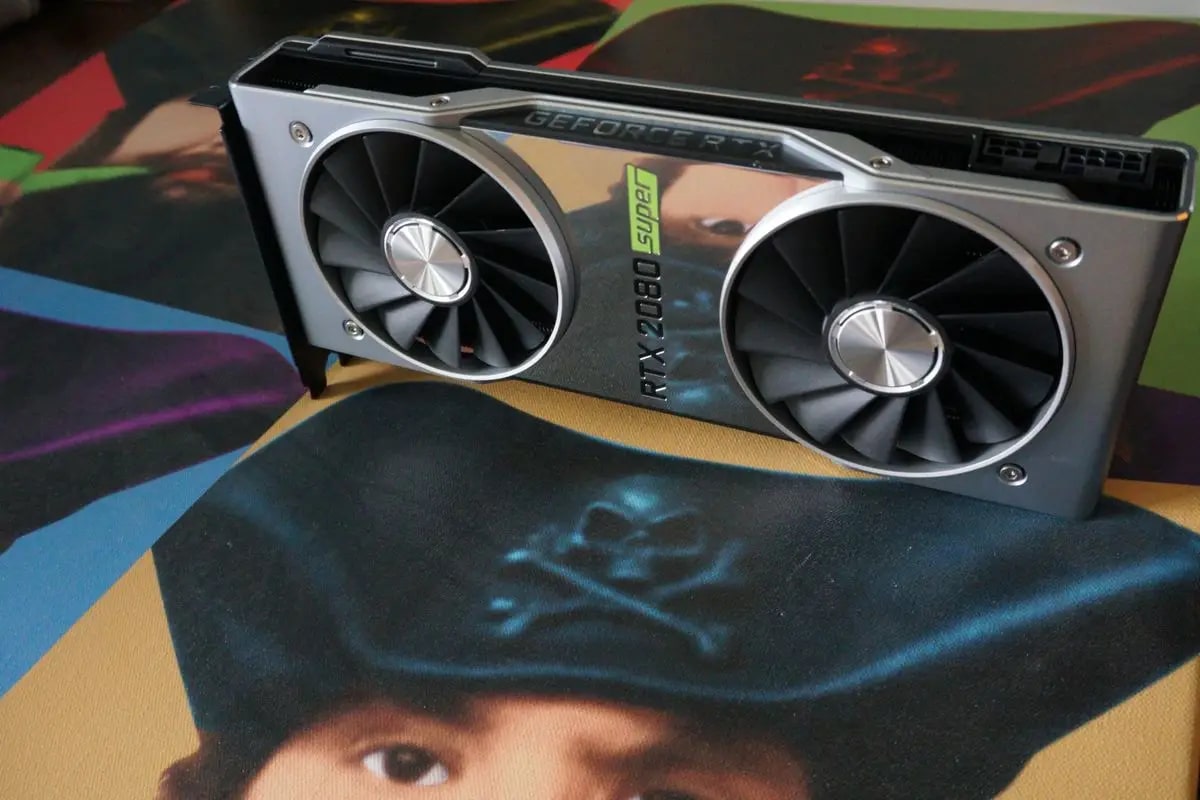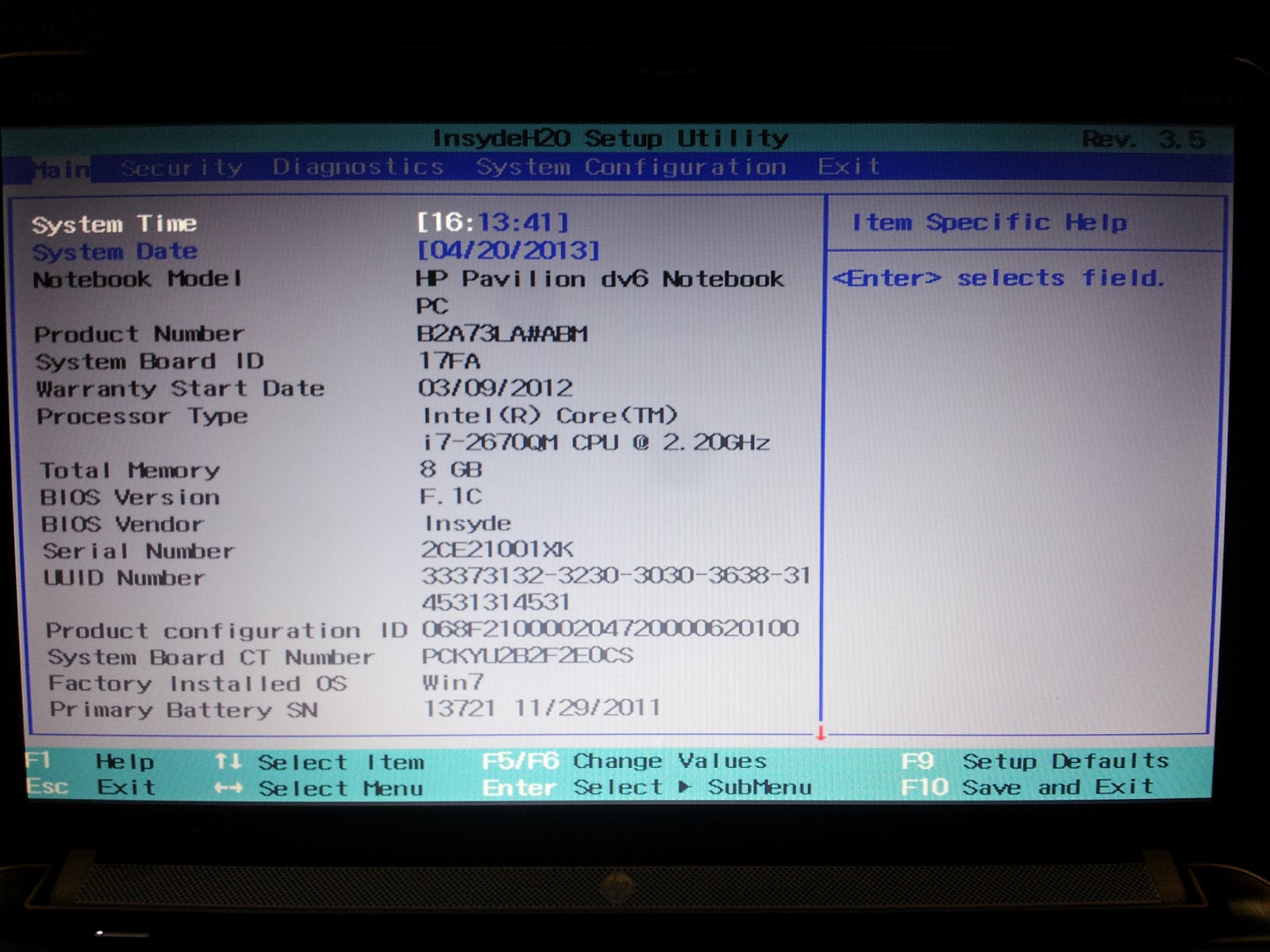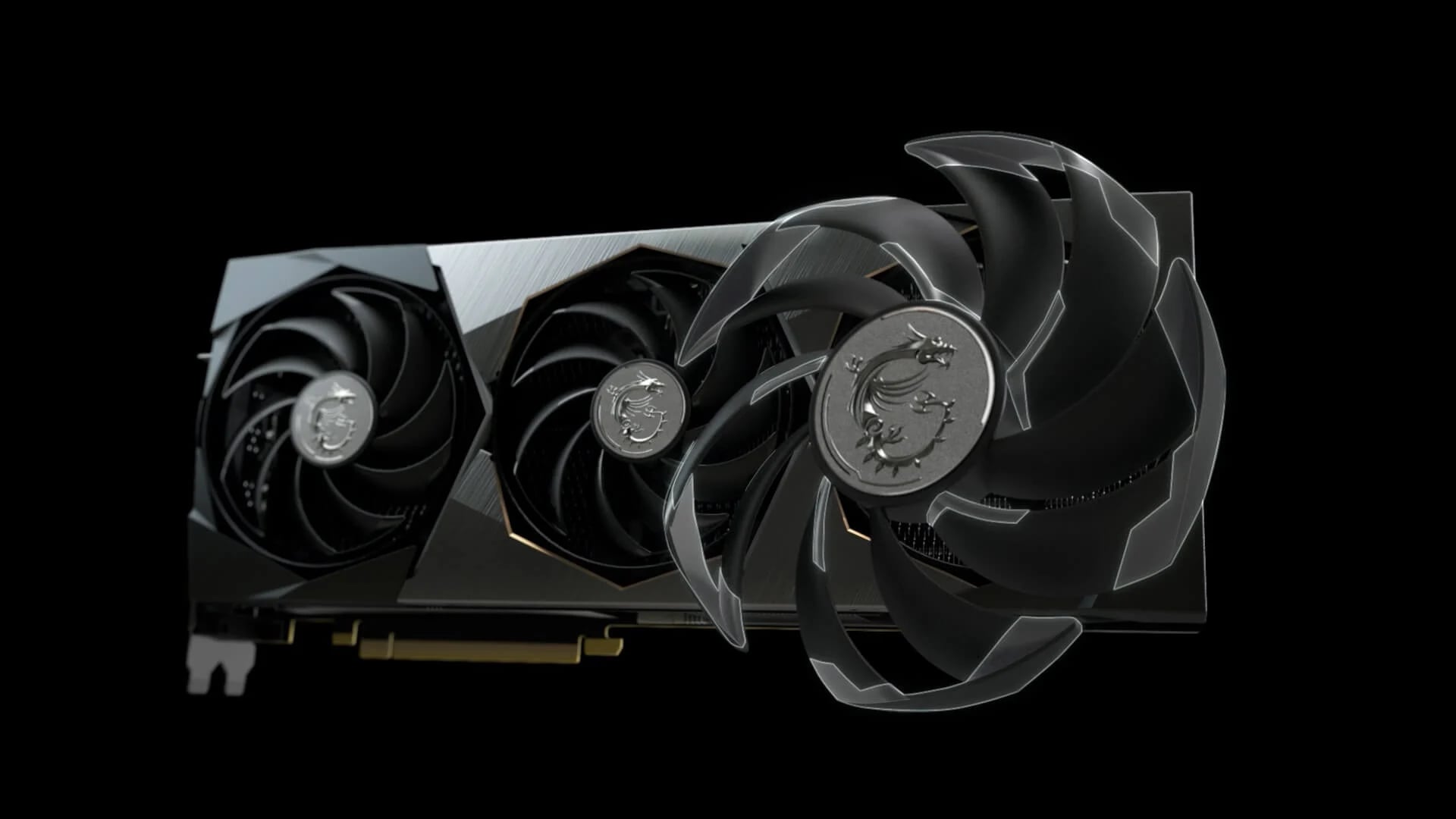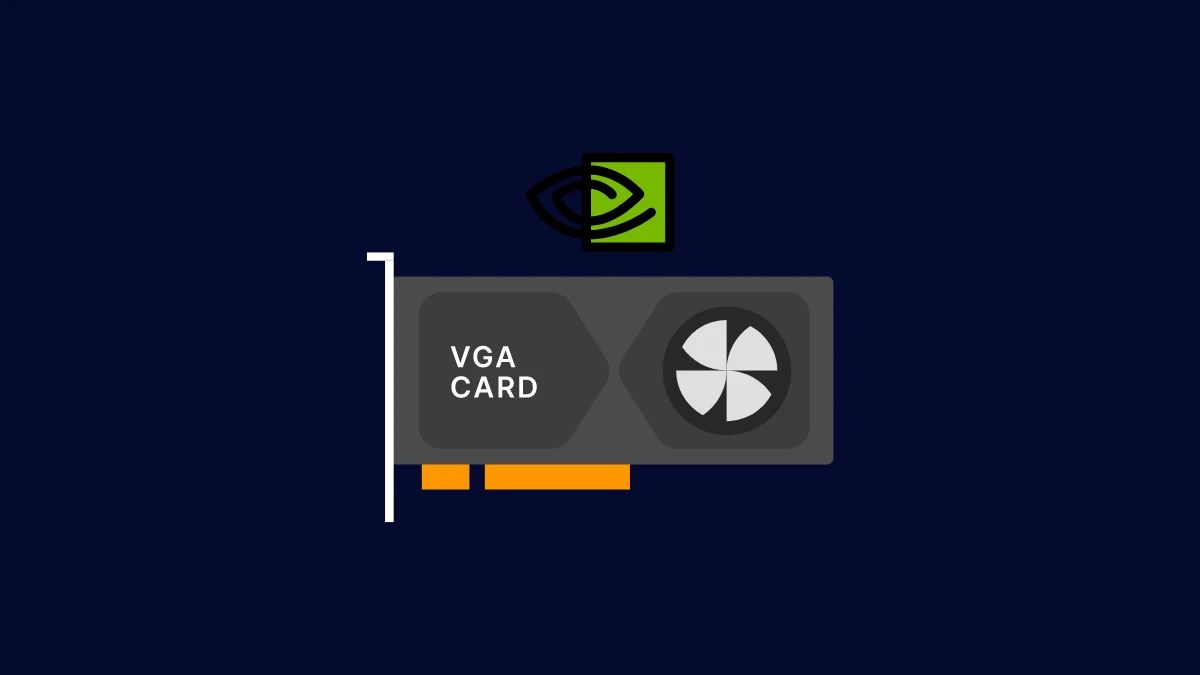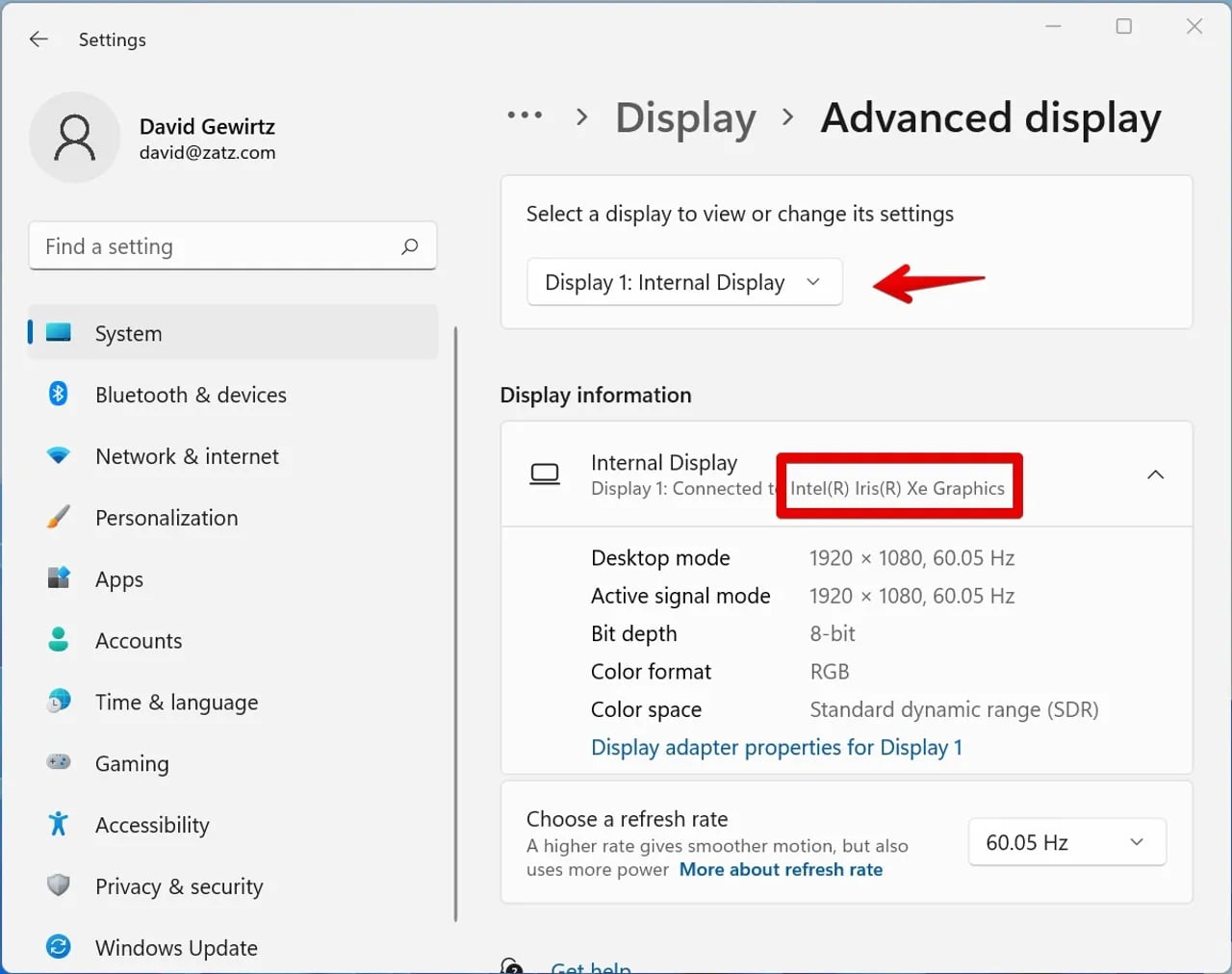Introduction
A graphics card, also known as a video card or GPU (Graphics Processing Unit), is an essential component of a computer that handles the processing and rendering of visual data. It is responsible for generating and displaying images, videos, and other graphical elements on your monitor.
While most computers come with a default graphics card, you may find the need to change which graphics card is used for various reasons. Whether you’re a gamer looking to maximize your gaming performance, a designer working with intensive graphical software, or simply want to troubleshoot issues with your current graphics card, knowing how to change the graphics card settings can be invaluable.
In this article, we will guide you through the process of changing which graphics card is used on different operating systems, including Windows, macOS, and Linux. We will also cover checking your current graphics card, updating drivers, and troubleshooting common issues that may arise during the process.
Before we dive into the specifics, it’s important to note that working with graphics card settings can have a significant impact on your computer’s performance. Therefore, it’s recommended to have some basic knowledge of computers and be cautious when making changes. If you’re unsure or uncomfortable with these steps, it’s always best to consult with a professional technician.
Now, let’s explore how you can change which graphics card is used on your system and optimize your computer’s performance.
What is a Graphics Card?
A graphics card, also known as a video card or GPU (Graphics Processing Unit), is a crucial component of a computer that is responsible for rendering and displaying visual elements. It is a specialized electronic circuit that accelerates the creation and manipulation of images, videos, and 3D graphics.
Essentially, a graphics card works by taking data from the computer’s CPU (Central Processing Unit) and transforming it into the pictures you see on your monitor. It does this by performing complex calculations and rendering tasks that require high-speed processing power.
Graphics cards have their dedicated memory, known as VRAM (Video Random Access Memory), which stores and accesses the image data needed for rendering. This allows the graphics card to independently process graphical information without overburdening the computer’s main memory.
Modern graphics cards are equipped with advanced technologies, such as shader units and texture mapping, which greatly enhance the quality and realism of graphics. They also have multiple outputs to support multiple monitors, allowing users to connect and display content on various screens simultaneously.
Graphics cards are not only beneficial for gamers, but they are also indispensable for professionals in creative fields like animation, visual effects, and graphic design. These professionals rely on powerful graphics cards to handle complex calculations and generate high-resolution visuals in real-time.
Whether you’re playing the latest video games, editing 4K videos, or designing intricate 3D models, a capable graphics card is essential for delivering smooth, immersive, and visually stunning experiences.
In the next sections, we will explore how you can change which graphics card is used on your system, providing you with the flexibility to customize your hardware and optimize performance based on your specific needs.
Why Would You Want to Change Which Graphics Card is Used?
There are several reasons why you might want to change which graphics card is used in your computer system. Let’s explore some of the most common scenarios:
- Gaming Performance: If you’re an avid gamer, you may want to change which graphics card is used to maximize your gaming performance. Some games require more graphics processing power than others, and switching to a more powerful graphics card can result in smoother gameplay, higher frame rates, and better visual quality. Additionally, certain graphics cards may have specific optimizations or features that are better suited to certain games.
- Graphic Design and Video Editing: Professionals working with graphic design, video editing, and other visually-intensive tasks often require a graphics card that can handle the demands of their software. By changing the graphics card, they can ensure faster rendering times, smoother playback, and better overall performance when working with large image files, complex 3D models, or high-resolution videos.
- Hardware Compatibility: In some cases, you may need to change the graphics card to ensure compatibility with other hardware components or peripherals. For example, if you have a new monitor that supports higher resolutions or refresh rates, you may need to switch to a graphics card that can take full advantage of these features.
- Troubleshooting Issues: If you’re experiencing graphics-related issues such as visual artifacts, display flickering, or crashes, changing the graphics card can help determine if the problem is hardware-related. By swapping out the graphics card with a known working one, you can identify whether the issue lies with the card itself or with other components of your system.
- Dual Graphics Cards: Some high-end systems support dual graphics cards, allowing for increased performance and graphical capabilities. In this case, changing the graphics card settings can determine which card is used for specific applications or tasks. This configuration is often used by professionals who require immense computing power, such as 3D designers or scientific researchers.
By understanding your specific needs and goals, you can make an informed decision about changing the graphics card to enhance your computer’s performance and ensure optimal functionality for your desired tasks.
Checking Your Current Graphics Card
Before you can change which graphics card is used on your system, it’s important to first identify the current graphics card that is being used. This information can help you determine the compatibility of your graphics card with certain software or hardware requirements.
Here are a few methods to check your current graphics card:
- Device Manager (Windows): In Windows, you can open the Device Manager by right-clicking on the Start button and selecting “Device Manager” from the menu. Expand the “Display adapters” section to see the list of graphics cards installed on your system. The name of your current graphics card will be displayed here.
- About This Mac (macOS): On a Mac, you can check your graphics card information by clicking on the Apple menu in the top-left corner and selecting “About This Mac.” In the Overview tab, click on “System Report” and then navigate to “Graphics/Displays.” Here, you will find detailed information about your current graphics card.
- Terminal (Linux): On Linux, you can use the Terminal to check your graphics card information. Open a Terminal window and enter the command “lspci -k | grep -A 2 -i ‘VGA\|3D'”. This will display the details of your graphics card, including the manufacturer, model, and driver in use.
Aside from these methods, many third-party software tools are available that provide detailed information about your graphics card, such as GPU-Z or Speccy. These tools can give you a comprehensive overview of your graphics card’s specifications, including clock speeds, memory size, and driver versions.
Once you have identified your current graphics card, you can proceed with updating drivers, changing settings, or making any necessary adjustments to optimize your computer’s performance and ensure compatibility with your desired applications or tasks.
Updating Drivers for Your Graphics Card
Updating the drivers for your graphics card is an essential step to ensure optimal performance, stability, and compatibility with the latest software and games. Outdated or incompatible drivers can lead to issues such as graphical glitches, crashes, or poor performance. Here’s how you can update your graphics card drivers:
- Using Official Manufacturer Software: Most graphics card manufacturers provide their own software that can automatically detect and update drivers for your specific graphics card model. Visit the manufacturer’s website, locate the “Support” or “Downloads” section, and search for the appropriate drivers for your operating system and graphics card model. Download and install the recommended drivers following the provided instructions.
- Using Device Manager (Windows): On Windows, you can update graphics card drivers through the Device Manager. Right-click on the Start button and select “Device Manager,” then expand the “Display adapters” section. Right-click on your graphics card, choose “Update driver,” and select the option to search automatically for updated drivers. Windows will search for and install the latest drivers if available.
- Using Software Update (macOS): Mac users can update graphics card drivers through the Software Update feature. Click on the Apple menu, select “System Preferences,” and click on “Software Update.” If an update is available for your graphics card, it will be listed here. Follow the prompts to download and install the update.
- Using Package Manager (Linux): Linux users can update graphics card drivers through the package manager of their respective distributions. Open the terminal and enter the appropriate command based on your distribution. For example, on Ubuntu-based distributions, you can use the command “sudo apt-get update” followed by “sudo apt-get upgrade” to update all installed packages, including the graphics card drivers.
After updating the drivers, it’s recommended to restart your computer to apply the changes properly. You can also verify that the updated drivers are correctly installed by checking the device manager or system information in your operating system.
Regularly updating your graphics card drivers will ensure that you have access to the latest features, performance improvements, and bug fixes provided by the manufacturer. This can greatly enhance your overall computing experience and prevent compatibility issues with new software or games.
Changing Graphics Card Settings in Windows
Changing graphics card settings in Windows can help you customize the performance, visual quality, and power usage to suit your specific needs. Here are the steps to change graphics card settings in Windows:
- Accessing Graphics Control Panel: Depending on your graphics card manufacturer, you may have a dedicated control panel software installed on your system. Look for software such as NVIDIA Control Panel, AMD Radeon Settings, or Intel Graphics Control Panel. You can usually find these programs by right-clicking on the desktop and selecting the corresponding option from the context menu. If you don’t have a dedicated control panel installed, you can still access most settings through the Windows Display settings.
- Adjusting Display Settings: In the graphics control panel or Windows Display settings, you can adjust various display settings such as screen resolution, refresh rate, and color depth. Higher resolutions and refresh rates can provide a sharper and smoother visual experience, but make sure your monitor supports these settings. You can also calibrate colors and adjust brightness, contrast, and gamma levels to suit your preferences.
- Tweaking 3D Settings: In the graphics control panel, you will find options to customize 3D settings for games and applications. This includes adjusting anti-aliasing, anisotropic filtering, texture quality, and other parameters that can enhance graphics quality and performance in 3D applications.
- Managing Power Settings: If you want to optimize power usage, you can adjust power settings in the control panel or Windows Power Options. You can choose between different power plans, such as Balanced or High Performance, to prioritize performance or energy efficiency. Keep in mind that selecting High Performance may result in higher power consumption.
- Updating Drivers: To ensure access to the latest features and bug fixes, make sure to update your graphics card drivers regularly. Refer to the previous section on how to update drivers for your graphics card in Windows.
It’s important to note that the options and settings available may vary depending on your specific graphics card and driver version. Explore the control panel software or Windows Display settings to familiarize yourself with the available options and experiment with different settings to find the optimal configuration for your needs.
Remember to apply the changes and restart any open applications for the settings to take effect. If you encounter any issues, you can revert back to default settings or consult the graphics card manufacturer’s support resources for troubleshooting guidance.
Changing Graphics Card Settings in macOS
Changing graphics card settings in macOS allows you to customize the visual quality, performance, and power usage according to your preferences. Although macOS provides a simplified interface for managing graphics settings, you can still make adjustments to enhance your experience. Here are the steps to change graphics card settings in macOS:
- Accessing Display Settings: Click on the Apple menu in the top-left corner of the screen, and select “System Preferences.” From the System Preferences window, choose “Displays” to access display settings.
- Adjusting Resolution and Scaled Options: In the Display preferences, navigate to the “Display” tab. Here, you can adjust the screen resolution and choose from predefined scaled options. Higher resolutions provide crisper visuals, but you may need to balance it with readability and performance based on your hardware capabilities.
- Changing Brightness and Night Shift: You can control the brightness of your display using the “Brightness” slider in the Display preferences. Additionally, you can enable Night Shift to reduce blue light emissions during nighttime for a more comfortable viewing experience.
- Configuring Graphics Performance (MacBook Pro): If you have a MacBook Pro with dual graphics cards, you can optimize power and performance settings. In the Display preferences, navigate to the “Graphics” tab, where you can choose between “Better battery life” or “Higher performance” modes. This setting determines which graphics card is used for different types of applications.
- Updating macOS and Graphics Drivers: Keep your macOS and graphics drivers up to date to ensure compatibility, reliability, and access to the latest features. Apple provides regular software updates through the “Software Update” feature, which can be found in the Apple menu. For graphics driver updates, check the manufacturer’s website or utilize the built-in macOS update mechanism.
While macOS offers a simplified interface, it is essential to note that specific graphics settings may vary depending on the Mac model and the graphics card being used. Explore the available options in the Display preferences to familiarize yourself with the settings provided, and make changes based on your preferences and requirements.
Remember to apply any changes made and restart your applications for the settings to take effect. Should you encounter any issues, you can revert to default settings or consult Apple support resources for further assistance.
Changing Graphics Card Settings in Linux
Linux provides a range of options for changing graphics card settings, allowing you to customize performance, visual quality, and power management according to your preferences. While the exact steps may vary depending on your Linux distribution and desktop environment, the following general guidelines can help you change graphics card settings:
- Accessing Display Settings: Open the system settings or control panel for your Linux distribution, which can typically be found in the applications menu or system tray. Look for options related to “Display,” “Monitor,” or “Graphics” settings.
- Adjusting Resolution and Refresh Rate: In the display settings, you can adjust the screen resolution and refresh rate. Higher resolutions provide sharper visuals, but ensure that your monitor supports the chosen resolution. Adjust the refresh rate to achieve smoother motion on the screen.
- Configuring Multiple Monitors: If you have multiple monitors connected to your Linux system, the display settings will allow you to configure their arrangement, resolution, and behavior. You can choose to extend the desktop, duplicate the display, or use one monitor as the primary display.
- Customizing Window Managers and Desktop Environments: Certain Linux distributions allow you to change window managers or desktop environments, which can affect the overall appearance and behavior of your graphical interface. Each window manager or desktop environment may provide its own set of settings to adjust visual effects, animations, and other aspects of the graphical environment.
- Power Management Options: Linux distributions offer power management settings that can help optimize power usage for your graphics card. These settings enable you to control the balance between performance and power consumption, allowing you to prioritize either depending on your specific needs.
- Updating Graphics Card Drivers: Keeping your graphics card drivers up to date is crucial for improved performance, stability, and compatibility. Depending on your Linux distribution, you can update the graphics card drivers using tools like package managers or software update utilities. Alternatively, you can download and install the latest drivers directly from the manufacturer’s website.
Since Linux provides a highly customizable environment, the available options and settings for changing graphics card settings may vary depending on your specific distribution and configuration. It’s worthwhile to explore the system settings, consult documentation or user forums specific to your distribution, and experiment with different settings to achieve the desired performance and visual experience.
Remember to apply any changes made and restart your system for the settings to take effect. If you encounter any issues, consult your distribution’s support resources or the Linux community for assistance.
Troubleshooting Common Issues
While changing graphics card settings can greatly enhance your computing experience, it’s not uncommon to encounter issues along the way. Here are some common problems that you might face and troubleshooting steps to resolve them:
- Driver Compatibility: If you experience graphical glitches, crashes, or performance issues after changing graphics card settings, it could indicate a driver compatibility problem. Update your graphics card drivers to the latest version compatible with your operating system. If the issue persists, try rolling back to a previously working driver version.
- Overheating: If your graphics card is overheating, the system may become unstable or automatically shut down. Ensure that your graphics card is adequately cooled with proper airflow and clean out any dust buildup in your computer case or graphics card fans. You can also adjust fan settings in certain graphics card control panels to increase cooling.
- Display Issues: If you experience problems with your display, such as poor image quality, flickering, or no signal, check the cable connections between your graphics card and monitor. Make sure the cables are securely plugged in and try using different cables or ports. Additionally, verify that the monitor’s settings and resolution are correctly configured.
- Resolution or Refresh Rate Problems: If you’re unable to achieve the desired screen resolution or refresh rate, it may indicate an issue with your graphics card or monitor driver. Update the drivers for both the graphics card and monitor, ensuring they are compatible with each other. If the issue persists, consult the manufacturer’s support resources or community forums for further assistance.
- Performance Degradation: If you notice a significant drop in performance after changing graphics card settings, check the performance settings applied. Make sure you haven’t inadvertently enabled features or settings that negatively impact performance. Additionally, close any unnecessary background applications or processes that may be consuming system resources.
- Compatibility Issues: Some software or games may not be fully compatible with certain graphics card settings or driver versions. If you encounter compatibility issues, try adjusting the settings or updating to the latest patch or version of the software. You can also reach out to the software or game developers for guidance on optimizing performance and resolving compatibility problems.
If you encounter persistent issues or are unsure how to resolve a specific problem, it’s recommended to consult the official documentation and support resources provided by your graphics card manufacturer. Alternatively, community forums and online support groups can offer valuable insights and assistance from experienced users who may have encountered similar issues.
Keep in mind that making changes to your graphics card settings can have a significant impact on your system’s stability and performance. Always exercise caution and create backups before making any major adjustments, and if uncertain, seek the assistance of a qualified professional.
Conclusion
Changing which graphics card is used on your computer system can have a significant impact on performance, visual quality, and overall user experience. Whether you’re a gamer seeking to enhance gaming performance, a professional working with demanding graphics software, or troubleshooting issues with your current graphics card, being able to adjust and customize graphics card settings is essential.
In this article, we discussed the importance of graphics cards and their role in rendering and displaying visual data. We explored various reasons why you might want to change which graphics card is used, such as optimizing gaming performance, improving graphic design workflows, ensuring hardware compatibility, or troubleshooting issues.
We also provided guidance on how to check your current graphics card, update drivers, and change graphics card settings in different operating systems – Windows, macOS, and Linux. Additionally, we offered troubleshooting tips for common issues that may arise during the process.
Remember, when changing graphics card settings, it’s essential to exercise caution, consult official documentation, and backup data to avoid any potential risks or data loss. If you’re uncertain about any adjustments, seeking the assistance of a professional technician is always recommended.
By understanding how to change graphics card settings, you have the flexibility to optimize and customize your hardware to suit your specific needs. Whether it’s high-performance gaming, professional graphics work, or ensuring compatibility with the latest software, taking control of your graphics card settings allows you to unlock the full potential of your computer system.
So go ahead, explore your options, experiment with different settings, and enjoy an enhanced visual experience and improved performance with your newly configured graphics card.









